  M C Escher was a Dutch graphic artist, well known for his spatial illusions, impossible buildings, repeating geometric patterns (tessellations), and his incredible techniques in woodcutting.
M C Escher was a Dutch graphic artist, well known for his spatial illusions, impossible buildings, repeating geometric patterns (tessellations), and his incredible techniques in woodcutting.
He was born in June 1898. His father was a civil engineer in the Netherlands, who realized at an early age that his son had a liking for art and drawing. This led him to decide to send Escher to study at the School of Architecture and Decorative Arts in Haarlem. However, Escher gave up arcitecture in favor of graphic arts at the age of 21. Escher spent several years travelling in Europe, while his interest in graphics grew. In 1921 he got married and lived in Rome, Italy. At the time, his works depicted landscapes using impossible perspectives. Many of his works were woodcuts, where the incredible detail was etched into wood. In the 1930s, Facism in Italy made life impossible for Escher and his family, so they moved to Switzerland. In 1936, Escher journeyed to Spain. The Moorish tilings he saw there fascinated him, and began to have an influence on his work. In 1941, Escher returned to the Netherlands, after spending a while in Belgium. His fame slowly spread, and during the 1950s, articles on his work appeared. His works began to be displayed in science museums rather than art galleries. Escher corresponded with several mathematicians. Escher's relation with mathematics and mathematicians is well known. In Eschers' words: "I have often felt closer to people who work scientifically (though I certainly do not do so myself) than to my fellow artists." Even without formal training, Escher was able to do what most mathematicians and scientists found to be impossible: illustrate complex concepts in such a way that even the non-mathematically inclined could appreciate their beauty. He was famous for his tessellations, or interlocking patterns, which were inspired by a trip to Alhambra, a 14th century Moorish castle in Granada, Spain. Escher expanded on this concept by stretching his tessellations over a circle, illustrating the concept of hyperbolic geometry on a two-dimensional sphere. During Escher's last years, his life turned inward, and he cut himself off and had few friends. During these years he produced his best known puzzling prints, which, art aside, were truly intellectually playful. Escher died on the 27th March, 1972 in Laren, Netherlands Here is a small selection of my favourite Escher works of art. Hover the mouse pointer over each to see its title. Click on each to enlarge it; click again to shrink it. 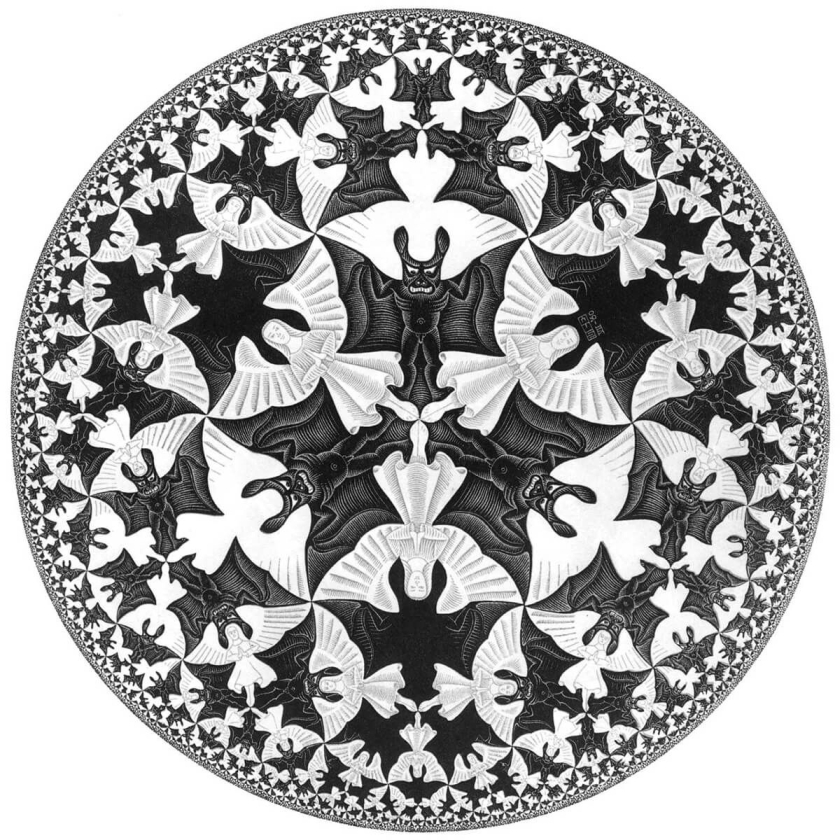
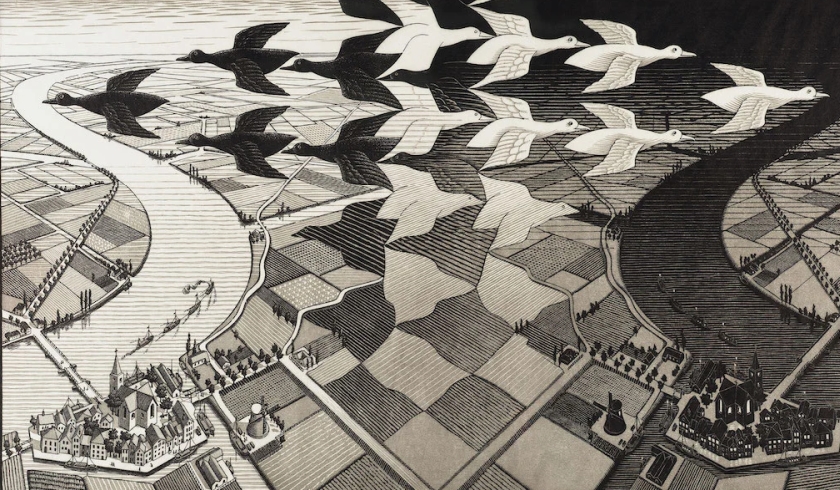
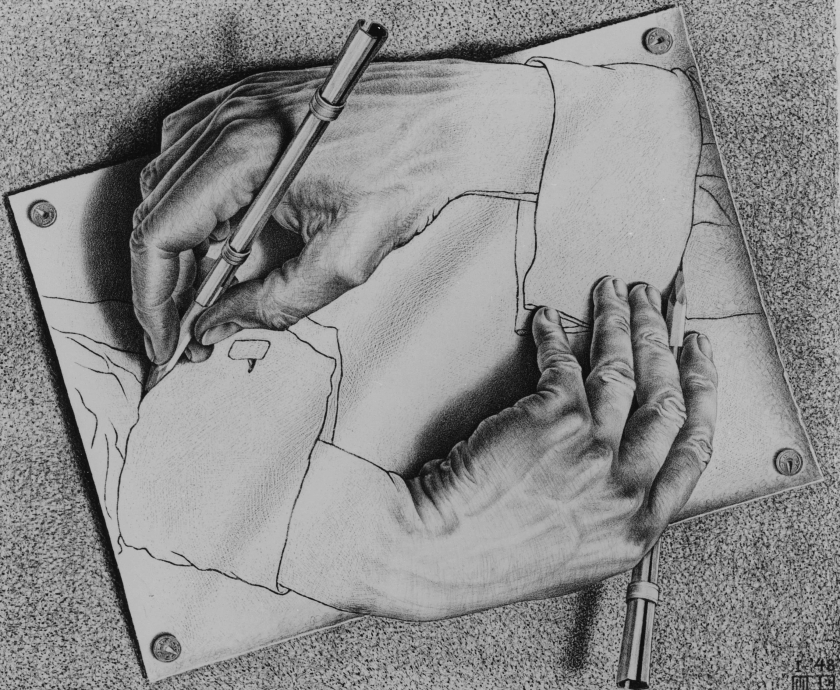 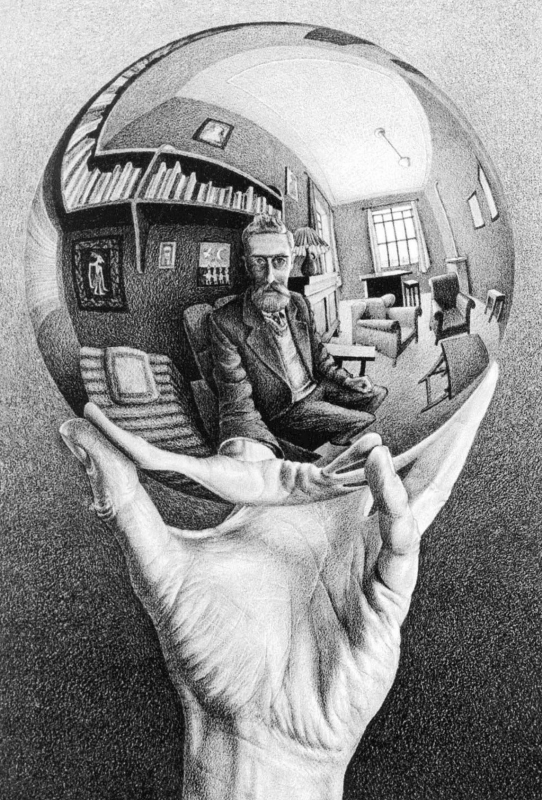
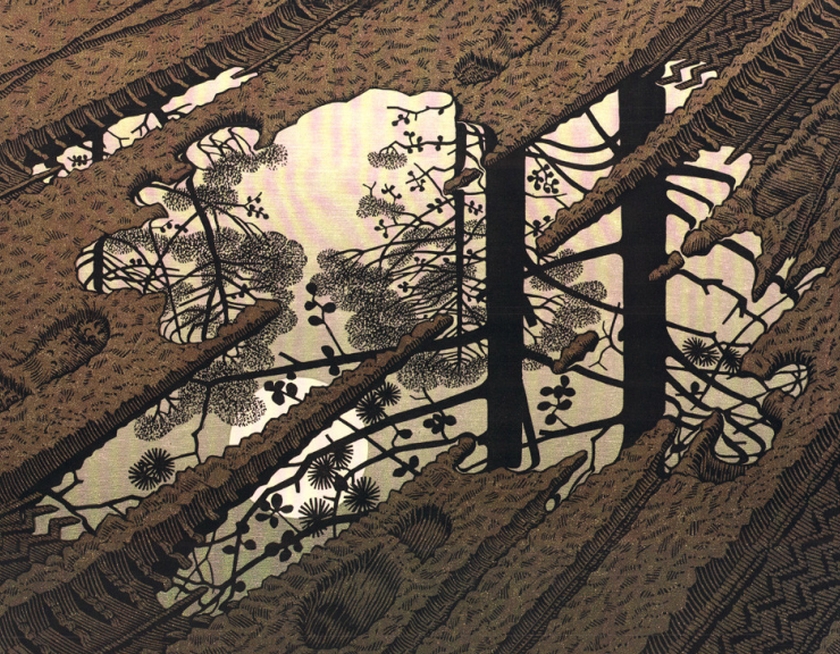
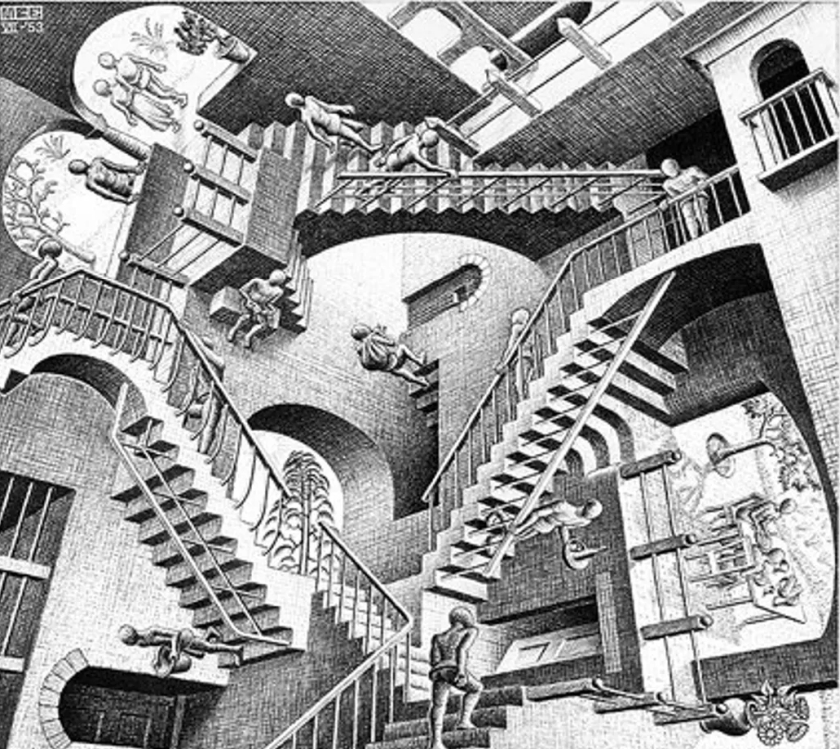 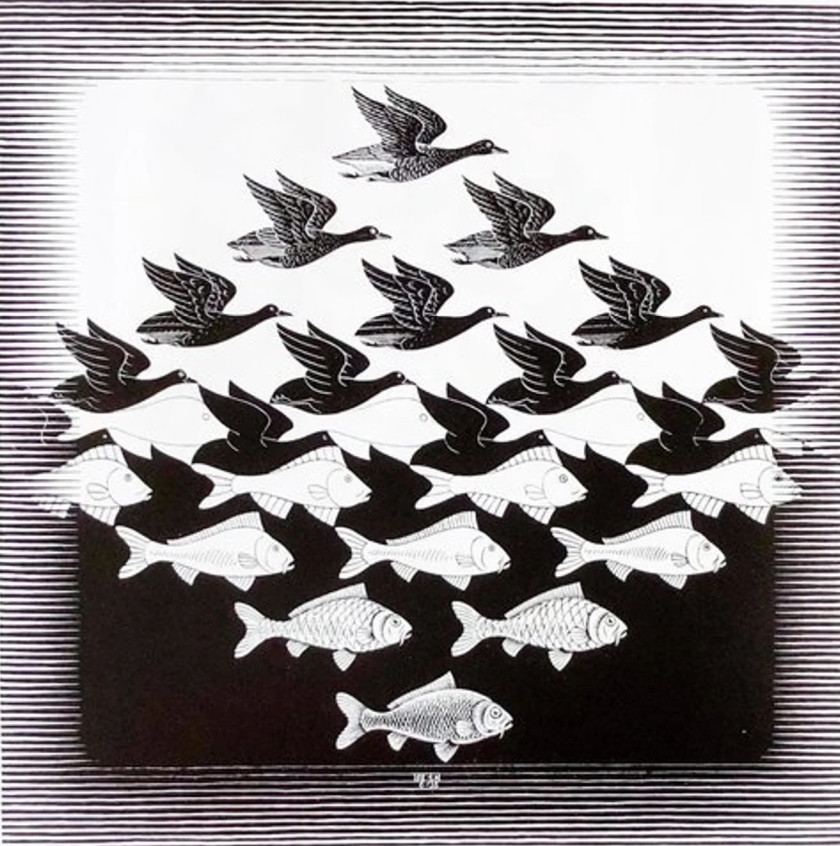
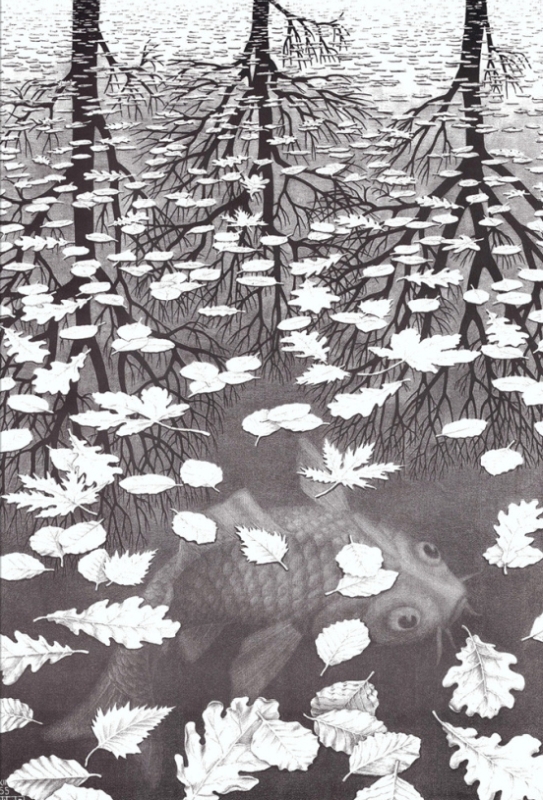
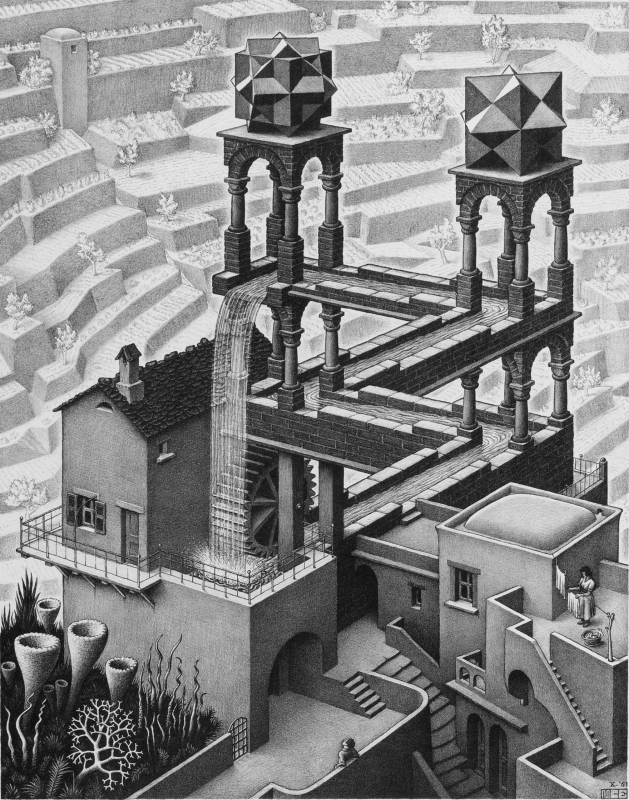 |